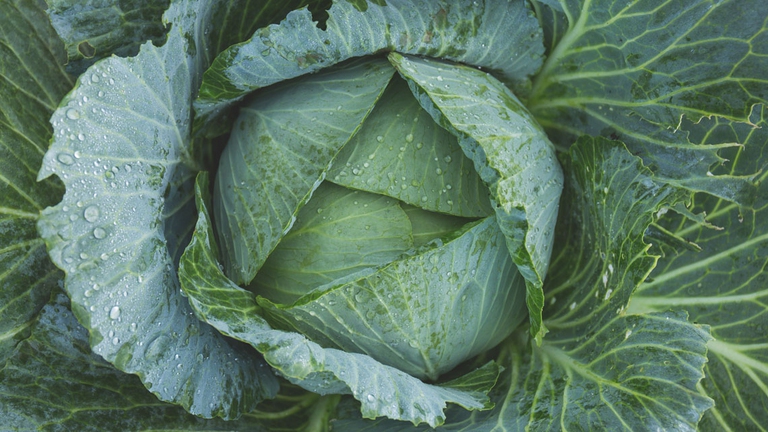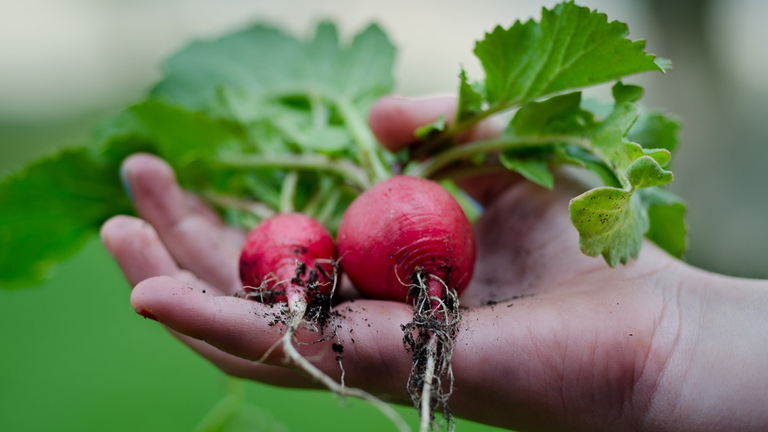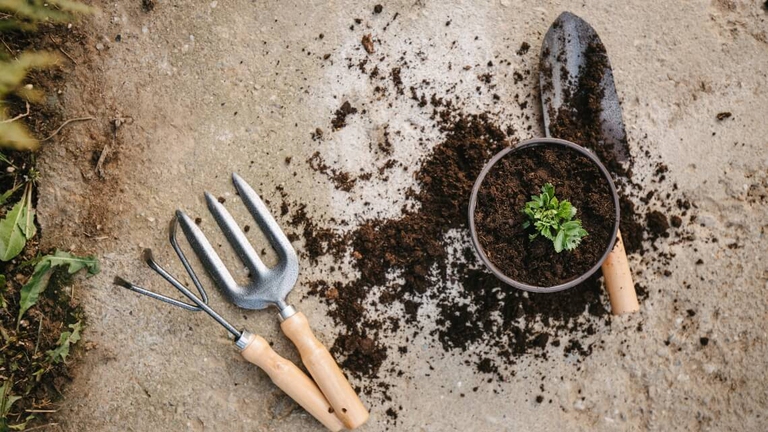https://www.lifegate.it/cosa-piantare-a-maggio
- |
first published May 1, 2010
May is a crucial month for the vegetable garden, marked by intense sowing activity and soil preparation which will be fundamental for the months to come.It is the ideal period to harvest the first spring vegetables and to dedicate yourself to taking care of the orchards.In this month, every gesture counts and can influence the abundance of future harvests.
What to sow in May
| Type of sowing | Plants to sow |
| Sowing in open field (beginning of the month) | Savoy cabbage, chicory, spinach, pumpkin |
| Sowing in open field (during the month) | Agretto, watermelon, beetroot, chard and vegetable chard, basil, carrot, cabbage and black cabbage, thistle, colored onion, cucumber, coriander, daikon, green beans, kidney beans, broad bean, fennel, melon, aubergine, Jerusalem artichoke, lettuce cut, pepper, pea, tomato, parsley, ramilaccio, radish, rocket, salsify, spinach, pumpkin, courgette |
| Sowing in pots | Leek, escarole, celery, curly endive, head lettuce, cauliflower (better soil and moisture management, prepare for transplanting when seedlings are suitable) |
What to sow in the vegetable garden in May

During the month of May, your garden can become a real biodiversity laboratory.Here is a complete list of plants that you can sow directly in the open field:
- At the beginning of the month:savoy cabbage, chicory, spinach and pumpkin (these vegetables adapt well to direct sowing in open fields, taking advantage of the mild temperatures in May which favor their germination and initial growth).
- During the month (varieties of vegetables for a continuous harvest): You can proceed with sowing agretto, watermelon, beet, chard and vegetable chard, basil, carrot, cabbage and black cabbage, thistle, colored onion, cucumber, coriander, daikon, green beans, beans, broad bean, fennel, melon, eggplant, Jerusalem artichoke, cutting lettuce, pepper, pea, tomato, parsley, ramilaccio, radish, rocket, salsify, spinach, pumpkin and courgette.
In May it is time to sow radishes outdoors: Known for their rapid ripening, radishes are perfect for those looking for quick results.

What to sow in pots for May
Sowing in pots is particularly suitable for those who have limited space or want to better control the growth process of their plants.
- cauliflower And head lettuce: start in pots to protect them from the low night temperatures still possible in early May.Transplant into an open field when the seedlings are robust and the climate has stabilized.
- leek, escarole and celery: sowing in pots allows you to better manage the soil and humidity, essential for the growth of these vegetables.Prepare for transplanting when the seedlings have reached a suitable size.

Transplants to do in the garden in May
May is also the perfect time to transfer several seedlings from the protected environment of the seedbed to the open vegetable garden.Below you will find the list of plants ready for transplanting, make sure that the risk of night frosts is averted and that temperatures are consistently mild:
- watermelon and melon: Transfer these seedlings to take advantage of the full growing season and ensure juicy fruit in summer.
- basil, coriander and parsley: heat-loving aromatic herbs, ideal for transplanting now that the days are getting longer and warmer.
- garden and chard, summer-autumn cabbage: Robust and ready for the open ground, these leafy vegetables benefit from the mild May weather.
- thistle, cucumber, bean, green bean: all these vegetables can now be transferred to the open field, where they will have enough space to develop fully.
- aubergine, pepper, tomato: Transplant them now to maximize their growing season and get a bountiful harvest in the warmer months.
- leek, ramilaccio, escarole, salsify, celery, tetragonia: these varieties require gentle transplanting but will benefit from moving to the open field.
- pumpkin and courgette: Ready to be transplanted, these plants will grow rapidly as temperatures rise and will give you abundant fruit towards the end of summer.
Transplanting in May means giving these plants the best possible start, taking advantage of the ideal climate to stimulate strong, healthy growth.
Work in the garden in May
Once the transplanting of the seedlings has been completed, it is essential to undertake a series of works that will ensure their optimal development and the health of the garden.Here are the main activities to carry out during this period:
- reinforce them potatoes: this practice involves adding soil around potato plants as they grow.This not only protects the tubers from sunlight, which can turn them green and toxic, but also helps maintain soil moisture and control weeds.
- put supports on tomatoes, peas and climbing green beans: stakes are essential to support the growth of these plants.Tomatoes, in particular, benefit greatly from stable support for their rapid vertical development and to keep the fruit off the ground, reducing the risk of disease.
- bury the mustard and others green manure: green manures such as mustard are grown to be buried once ripe.This process enriches the soil with organic matter, improves the soil structure and increases its fertility.
- cut the fillets to encourage the growth of the tomatoes: the females are the lateral shoots that grow between the main stem and the branches of the tomato.Removing them allows the plant to focus its energy on the fruit rather than on growing new branches, thus encouraging the development of larger, healthier tomatoes.
These jobs are essential for caring for the transplanted plants and ensuring the overall well-being of the garden, thus allowing a productive and rewarding growing season.
Garden flowers
This is the ideal time to plant flowers that will enrich your garden during the summer.Here are some helpful tips:
- choose plants suited to your climate and soil.If your garden is exposed to hot, dry summers, opt for drought-tolerant species.
- use flowers to create visual contrasts or harmonies, choosing colors that complement the surrounding landscape.
- Plant flowers of various heights to give depth and visual interest to the garden, while also attracting pollinators such as butterflies and bees.
Fruits and orchard care
Planting and caring for fruit trees this month prepares you for future harvests:
- be sure to choose varieties that thrive in your local environment.
- keep the soil moist and protected from weeds with an adequate layer of mulch.
- practice light cuts to maintain the shape of the trees and promote the growth of quality fruit.
Specific interventions in the orchard
Renew the mulching under fruit trees and shrubs.Check that the ties are not too tight and eliminate the shoots that arise under the rooted grafts.Run the green pruning on stone fruit (cherry, peach, plum, apricot, etc.) e on the vine (pruning of shoots and thinning of bunches).
The harvest from the garden in May
May is a month full of harvests in the garden, with a variety of vegetables reaching maturity and ready to be enjoyed.Here's what you can expect to collect this month:
- Fresh garlic: perfect for flavoring numerous dishes, it is less pungent than the dry one.
- Beet: This vegetable offers both nutritious roots and leaves to enrich your table.
- Chard:stems and leaves are very tasty and versatile in the kitchen.
- Cucumber: ideal for fresh salads or for pickling.
- Onion: they are starting to be ready for harvest, useful in almost all recipes.
- Daikon: vegetable of Asian origin, it is considered a natural fat burner.To be used in salads or cooked.
- Strawberries:May is their month, strawberries are sweet, juicy and of a beautiful intense red color.
- Head lettuce in spring varieties: tender and tasty in this period.
- Pea: sweet and crunchy, peas are among the first fruits of spring.
- Parsley: essential aromatic herb, continues to grow and can be harvested regularly.
- Rocket: its spicy leaves are ideal for giving a lively touch to salads.
This harvest allows you to savor the freshness and nutritional value of freshly picked produce, significantly improving the quality of your diet and giving you the deep satisfaction that only a personally managed garden can offer.May, therefore, emerges as a month of generous abundance, transforming every meal into a celebration of seasonal flavours, thus celebrating the richness and variety that nature can offer.
